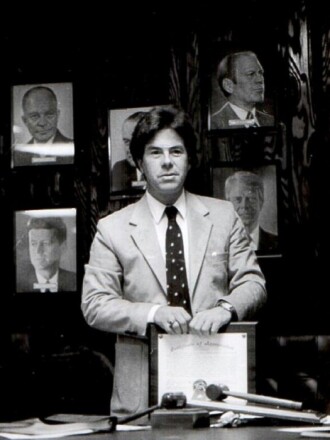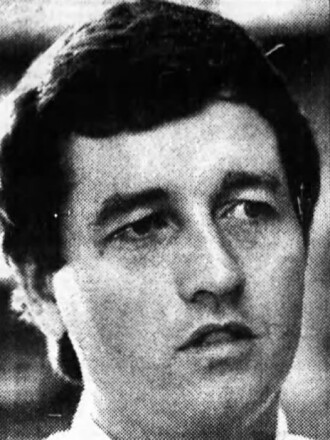This is the conclusion to the Minnesota Vice series.
PRINCETON, Minn.—I went to look for Casey Ramirez one last time.
ADVERTISEMENT
It was Sunday, June 8, and I'm at the Lions Club fly-in pancake brunch at the Princeton, Minnesota, airport.
Some folks had told me Ramirez liked to show up to this event, one he started back in 1981.
I found pancakes and planes, but no Casey. That's about what I had come to expect.
When I first started reporting this story, I thought it would be easy to find Princeton's most notorious one-time citizen.
These days, it usually is. Most of us leave a lot of footprints in public records, digital breadcrumbs on websites and social media. An address here, a phone number there.

Ramirez was different. I found almost nothing.
Once, his arrogance had been his greatest weakness. But he has apparently worked hard to stay off the radar since 1997, when he got out of federal prison after serving about 13 years for smuggling cocaine.
ADVERTISEMENT
I tried to contact him any way I could. I called any phone number I found for him. I visited his alleged home address, not far from Princeton, in the northern Twin Cities suburb of Blaine.
There, I talked to a woman, a Princeton native herself, who I had been told was his girlfriend. She promised to deliver a hand-written letter I brought for him. He never responded.
Crickets.
Ramirez is under no obligation to talk to me, of course. He’s done his time. But I had questions for him, ones that have never been answered.
Why Princeton? Why base your cocaine smuggling operation there? Why flaunt it?

I had one question I wanted to ask more than all the others. I think it's one he would most hate to answer, because he seems like a man who loves to be liked, but hates being known.
Who are you really, Casey?
ADVERTISEMENT
Keeping the saga alive
Princeton has never been able to fully shake Ramirez and his shenanigans from the town’s reputation.
Nearly every Princetonian I talked to about Ramirez had a story about people asking them about him. None of them liked it very much.
At the Princeton Area Chamber of Commerce & Tourism, incoming members of the Chamber’s Leadership Series training are always shown the WCCO I-Team investigation of Ramirez.
It's presented less as a cautionary tale and more as part of the town’s history (attendees also watch a news story about , and one about in 2011).
“We then discuss how these events are all part of our history of Princeton,” said Kim Young, executive director of the Chamber, in an email. “We spend the entire day talking about the history of Princeton — that is just a small part of it.”

There does remain something of a living memorial to the Casey Ramirez era in Princeton — a single, small palm tree that has somehow survived its bizarre debut in Princeton in April 1981.
It's now parked in front of the business of Ramirez's long-time ally, former Mayor Richard Anderson (Read more on that in this column from my colleague, Princeton native Rob Beer).
ADVERTISEMENT
Getting to the truth
I have dug deep into Ramirez’s history. I’ve found his New York City birth record (He's listed as Ramirez, Male, July 2, 1947. Certificate No. 12967).
I found a 1950 census taker’s notes logging young “Diego” Ramirez’s presence in at age 3, adjacent to the rumble and squeal of the Third Avenue elevated train.

I’ve tracked the the ship he crewed as a Navy sailor, that seems to match his claims of when and where he met Kathleen Bredemus, his claimed reason he first visited Princeton, Minnesota.
I’ve researched his endless stream of pseudonyms (I’ve counted 18 so far). There was for a Blaine, Minnesota, woman that expressed gratitude for the friendship of "Joe Ramirez."
I was floored to stumble across featuring him. He was a Verizon salesman at the time, helping a man get his elderly mother on Facebook.
Like he had so often before, he used a pseudonym, calling himself “Joseph Ramireza.”
After all my research of him, it was a shock to watch the video and see an older version of the man who I felt like, in some ways, I had gotten to know. Except, I knew, I really hadn’t. Not really.
ADVERTISEMENT
a Princeton native who touched fame after playing on Bob Dylan’s legendary “Blood on the Tracks” album, told me in an interview about an experience he had with Ramirez that stuck with him.
Odegard had attended the Princeton fly-in and Lion's Club pancake breakfast and ran into Ramirez, who recognized him.

As they stood at the syrup table, Ramirez mentioned Odegard’s beloved deceased brother Steve, who once ran the family’s local car dealership. He twisted the knife.
“‘You know, Kevin, you're not fooling anybody,’” Odegard recalled Ramirez saying. “I said, ‘What do you mean, Casey?’ Casey said, ‘Your brother knew everything. Your brother knew it all. He knew everything that was going on. He was not deaf, dumb and blind. He knew everything.’”
“He wanted me to know that he had completely conquered the town, including my family, my brother,” Odegard told me. “His conquest was entire and complete.”
There, laid bare, was the younger Casey Ramirez of my research and my interviews— all jokes and smiles, and helping the old folks, but underneath, always ready to puncture your self-righteousness and remind you of your part in his scheme.
Complicit.
ADVERTISEMENT
There were many in Princeton who were not taken in by Ramirez. Many had questions and doubts. But most Princetonians reasonably trusted their leaders to do the town’s business the right way, with the right people.
That trust was misplaced.

Ramirez ensnared key leaders of the city. Some of them, most notably Mayor Richard Anderson, were allies to the end. Others seemed almost indifferent, right up to his guilty sentence, uninterested as long as he kept paying for things for the town.
Long after Ramirez was tagged by WCCO’s I-Team as likely being involved with drugs, even after it was clear federal investigators were digging deep into his activities, Princeton leaders still got into bed with him, right up until he got sent to prison.
I struggled to understand Princeton's leaders' near-universal shrug.
But Greg Withers, the former Princeton city manager, helped me understand.
A big bag of cash
Withers told me about a personal experience he had with Casey Ramirez, one that probably took place in mid-1984, before Ramirez was on trial.
This was well after it was clear Ramirez had an purposely obscured background, no clear, legal source of money, and was under federal investigation.
Ramirez still owed Princeton about $10,000, money for work on the town airport, and invited Withers to a meeting at the office of his local lawyer, Tom Meinz.

There, Ramirez and his pilot pal Kent Moeckly told an obvious cock-and-bull story about an odd paper bag Moeckly had supposedly found outside, near a large trash bin. Allegedly, Moeckly had toted the bag inside and put it a basket in the office.
It was just sitting there. Right in front of Withers.
Ramirez suggested to Withers: Why don’t you take a look inside?
“So I pull out this brown paper bag, and there's approximately $10,000 cash,” Withers said.
What a wild coincidence.
Withers could have walked out the door. Obviously this wasn’t the way business was normally done.
But Withers didn’t walk out the door. Instead he had a question for Ramirez.
“Who do you want me to make the receipt out to?”
It was a revealing story. To Withers, Ramirez wasn’t really his problem. Instead, getting the bill paid, and getting the right paperwork for it, were the real problems to solve, among many for a busy city administrator.
That’s how easily responsibility—accountability—can slip away. In that one moment, Withers, like many other leaders in Princeton, made himself a complacent collaborator in Ramirez’s deceptions, while also absolving himself of responsibility.
Just like that.

That's how easy it is to become complicit to corruption.
Withers’ recollection shocked me—the nakedness of it, a payoff involving a literal bag of cash.
What would I have done when confronted with $10,000 in cash? What would you have done?
I asked him: So knowing what you know now, what would you advise yourself to do differently?
Withers paused and thought about it. Then answered.
“People have asked me that before, and I've said, 'No, I don't recall anything that I would do differently, no.'"
Ramirez was everybody's problem. Which meant he was nobody's problem. Not really.
Maybe, Withers said, he could have suggested the city council first get some insight into the source of Ramirez's money before accepting his largess?
But, "I don't know how that kind of motion would have ended up," he said.
He's right. Until late in the game, the council was content to not ask too many questions.
It was easier to just not worry about it.











